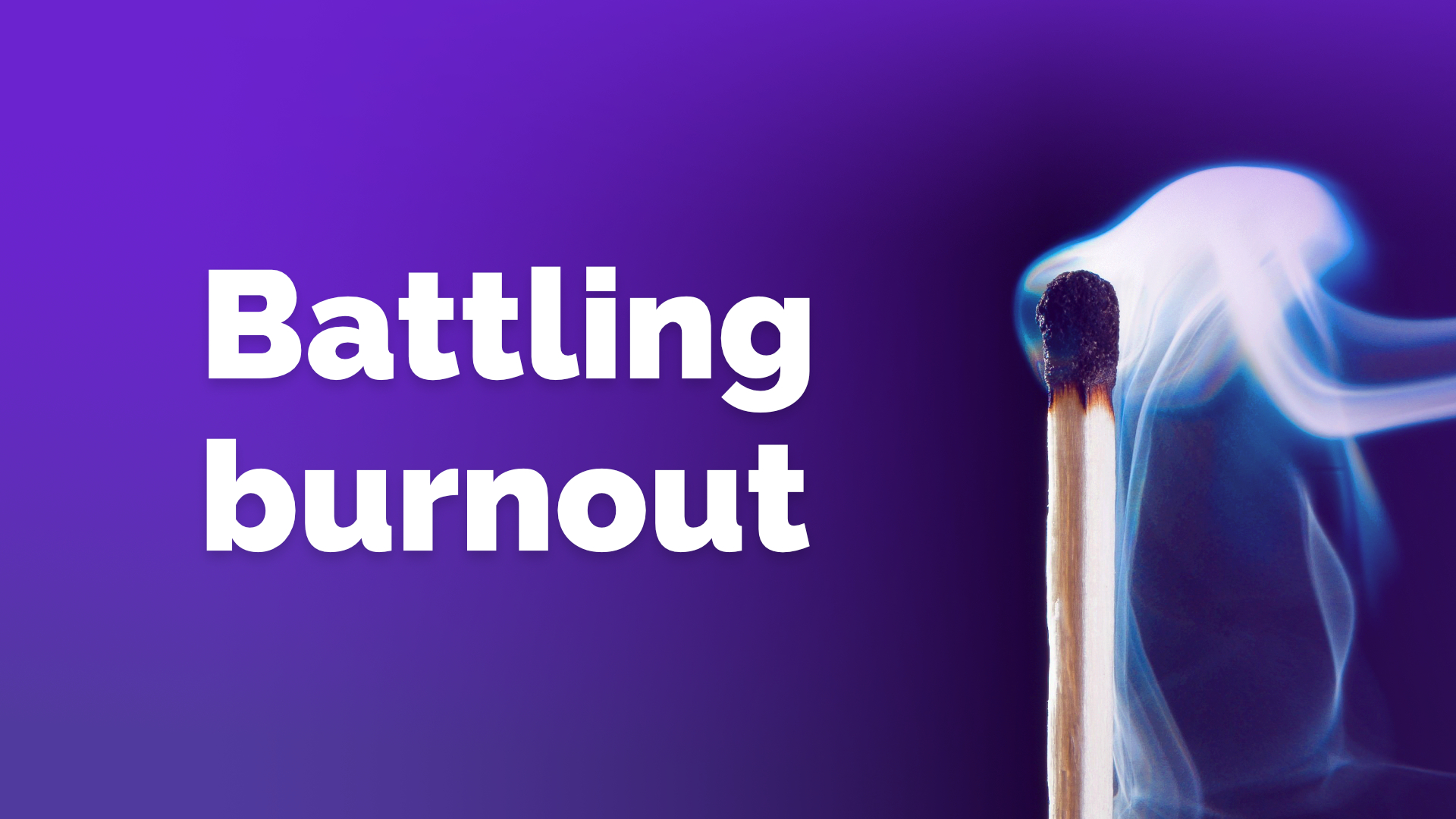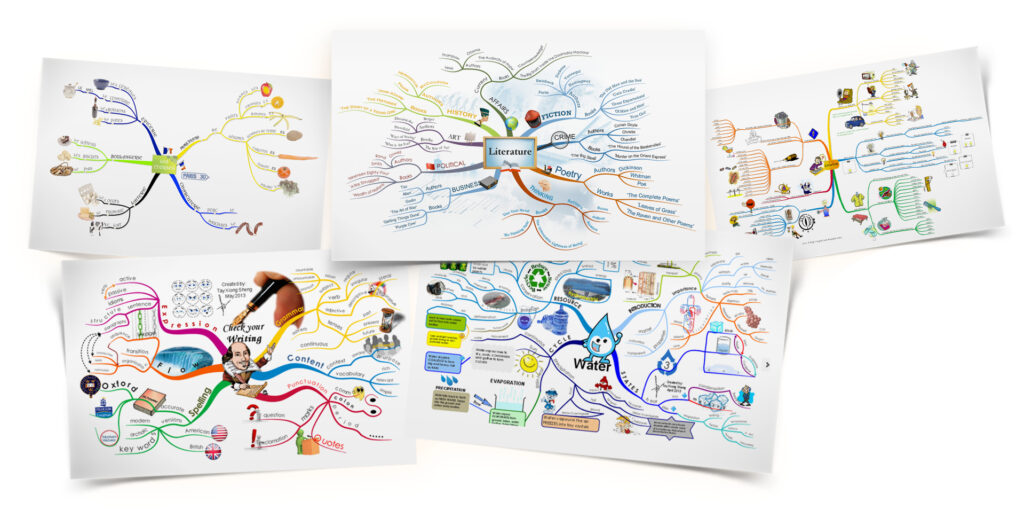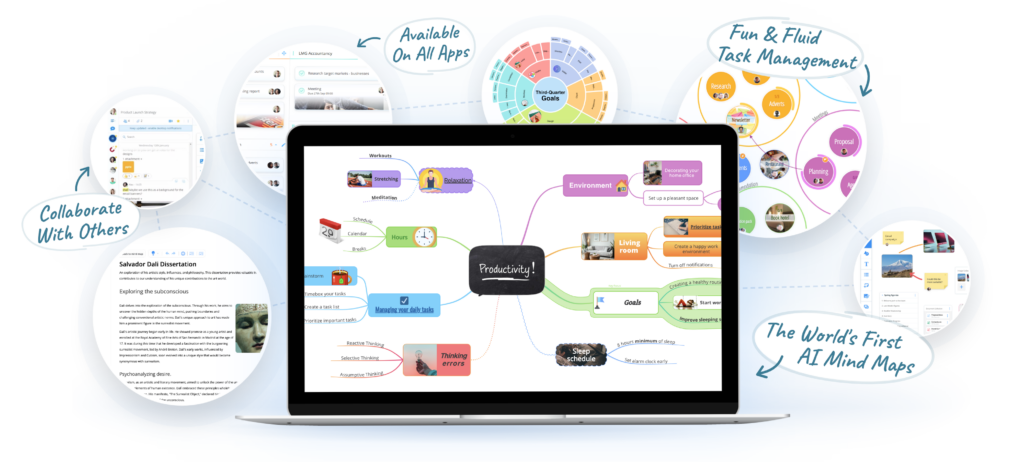September 26, 2024
Battling burnout: How mind mapping can help

In our digital age, where we are constantly connected and bombarded with information, stress and burnout in the workplace have become pressing issues. Today, more than ever, mind mapping offers a solution to combat the pitfalls of technology and rebuild a healthier relationship with digital platforms.
Using this visual thinking technique can help people avoid burnout by organising thoughts and planning responsibilities and goals, as well as enhancing creativity. Through a visual representation of ideas and information, it enables processing of complex information more efficiently, thereby reducing or avoiding cognitive overload, which causes stress.

Here’s how mind mapping, in very simple terms, can help combat burnout:
- Make things clear and help you focus: Mind maps make projects and goals clear and allow people to focus on them.
- Stress relief: Because a mind map visually organises information in a way that reflects the connections between ideas, it helps clear mental clutter and relieves stress from information overload.
- Superior creativity: Mind maps inspire non-linear thinking, boosting creativity and problem-solving skills that make work more interesting and less exhausting.
- Better time management: When the tasks needed to complete a project to a deadline are made visible, professionals can plan their time efficiently and avoid anxiety.
- Collaborative work: Digital mindmaps (eg, tools like Ayoa.com) help with collaboration and allow people to chose how they see the information that is being shared.
- Fun and engaging: Mind maps are used by millions of individuals because they are also enjoyable to use. Do not understate how import it is to use digital tools that are fun, engaging, and visually stimulating. If your brain likes to use something, your brain works better.
As we find ourselves evermore at the mercy of fast-changing but necessary technologies, including AI, we need to embrace the tools and techniques to help us navigate our cognition and preserve our wellbeing. Mind mapping, especially harnessed through a holistic solution such as a tool like Ayoa, can have a pivotal impact in sanitising our modern working culture and reducing the risk of burnout.

A deliberate strategic approach to mind mapping can help professionals to mitigate the difficulties of the digital office, to maintain a constant attention on key work priorities, and to foster a more healthy, sustainable approach to work in our highly connected age.
Why Mind Mapping is an Effective Approach to Recovery?
To recover from burnout, it’s important to identify the myriad stresses that shape your wellbeing. Mind map is an effective way to picture and untangle these issues, with research indicating that using mind maps can lower stress by as much as 30%. Research shows that those who apply mind mapping to recover from burnout claim to feel more in control of their lives after two weeks of consistent practice.
Mind mapping, by its visual format, reduces intense emotions to component parts. These structured ways of processing stress have been shown to improve cognitive clarity by 40% and lower anxiety by 25%. You use mind maps to project outward your thoughts and map out where you’re going, and how you can move forward.
How to Reduce Work Stress Using Mind Mapping?
To avoid burnout, it’s important to know how to handle stress at work. Mind mapping provides a formalised way of managing work stress and employees who use mind maps have reported a 45 percent increase in their ability to manage work stress. Workflows and priority mappings help employees better organise their time and energy by creating visual representations of what needs to be done.
Companies that use mind mapping to cope with stress experience a 35% decrease in cases of burnout. The approach allows you to spot early indicators of stress and establish concrete strategies for managing them. Project-management teams that use mind map help are 28% less stressed in high-pressure situations and experience better work-life harmony.
Real Life Mind Mapping Strategies to Avoid Burnout
When you are going through burnout recovery, begin by creating a single mind map that will include your current state. Mind mappers, who are habitual users of mind maps, report 40% faster recovery times following burnout than people who employ conventional stress management methods. Start with central branches of each area of life (job, health, relationships) and branch out on each to see which stressors you can deal with and how to resolve them.
Mind map tool is particularly effective when applied daily to track and manage stress. Consistent mind mapping lowers stress-related symptoms by 50% after a month of usage. Users report improved sleep, better concentration, and enhanced decision-making abilities when regularly using mind mapping techniques.
Mind Mapping for Sustainable Stress Management and Prevention
For long-term success in managing workplace stress, making mind mapping part of your daily routine is key. Organizations implementing regular mind mapping practices see a 60% improvement in employee wellbeing and a 40% reduction in stress-related absences. The technique provides a sustainable approach to maintaining mental health and preventing future burnout.
Regular mind mapping sessions help create a proactive approach to stress management. People recovering from burnout who maintain weekly mind mapping practices are 70% less likely to experience a relapse within the first year. The visual nature of mind maps makes it easier to track progress and identify potential stress triggers before they become overwhelming.
By incorporating mind mapping into your recovery journey, you create a powerful tool for understanding and managing stress. Whether you’re currently recovering from burnout or seeking preventive measures, mind mapping offers a proven approach to maintaining mental wellbeing and creating a more balanced, sustainable work life.
